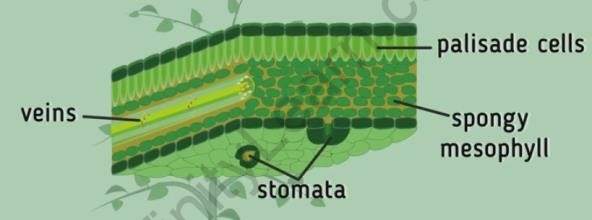Table of Contents
- Photosynthesis in Plants
- Respiration in Plants
- Summary
- What’s Next?
In the previous segment, we learnt about Pulmonary and systemic circulation. In this segment, we will learn about photosynthesis and respiration in plants.
What is Photosynthesis?
- Photosynthesis is the process in which plants convert light energy to chemical energy to prepare their own food.
- Plants need three reactants for this process: carbon dioxide, water, and sunlight.
- These reactants react to form glucose and oxygen. The reaction is:

Chemical equation of photosynthesis
- Sunlight
- The leaves of the plant play the most important role in photosynthesis.
- The upper part of the leaf is composed of Palisade cells and is responsible for trapping sunlight.

Palisade cells
-
- The palisade cells contain a large number of Chloroplast, which contains Chlorophyll
and they are the site for photosynthesis.
- Carbon dioxide

